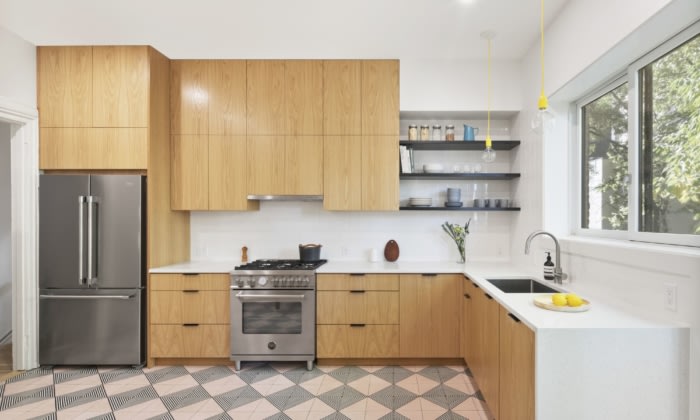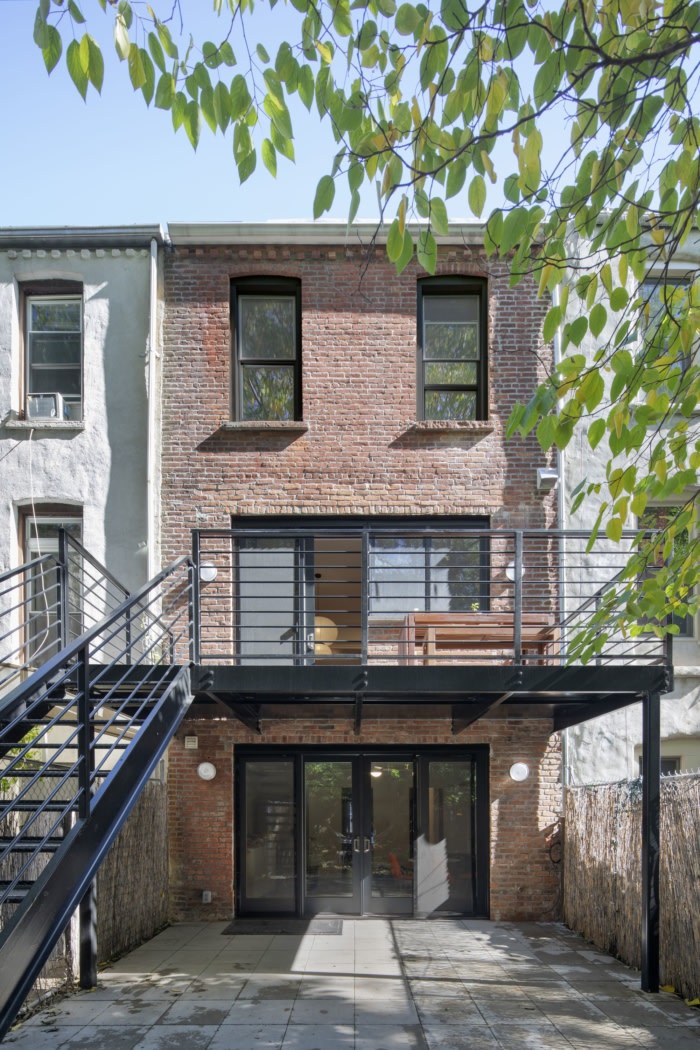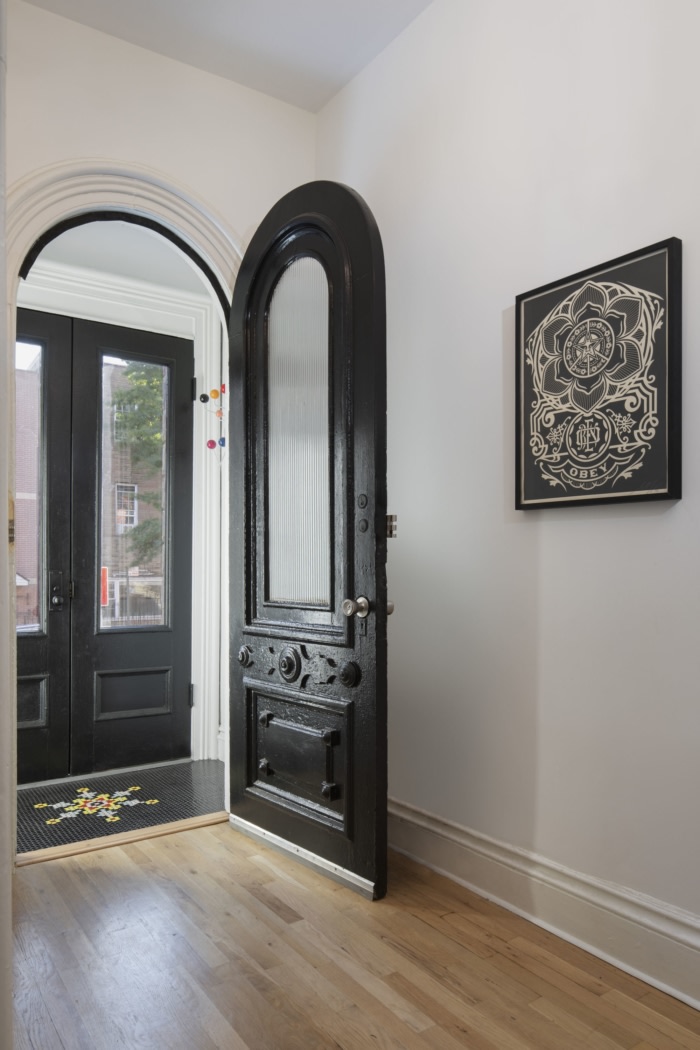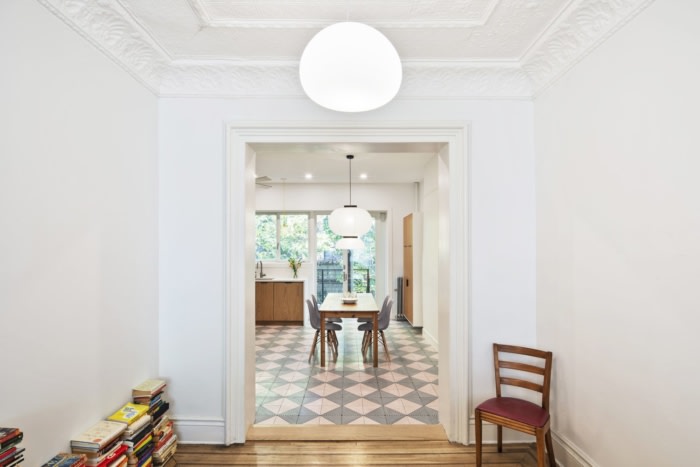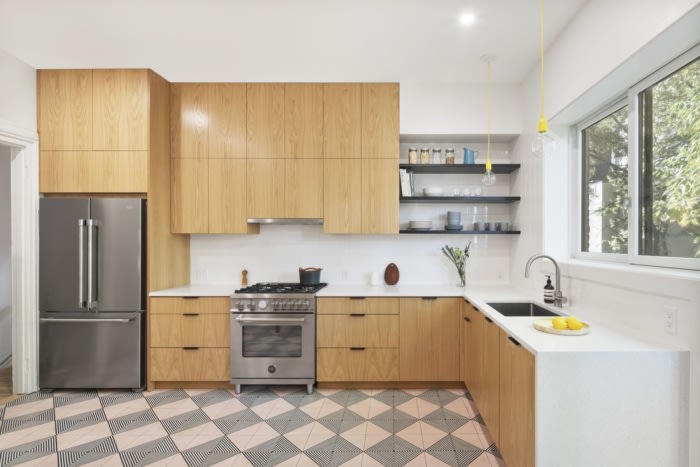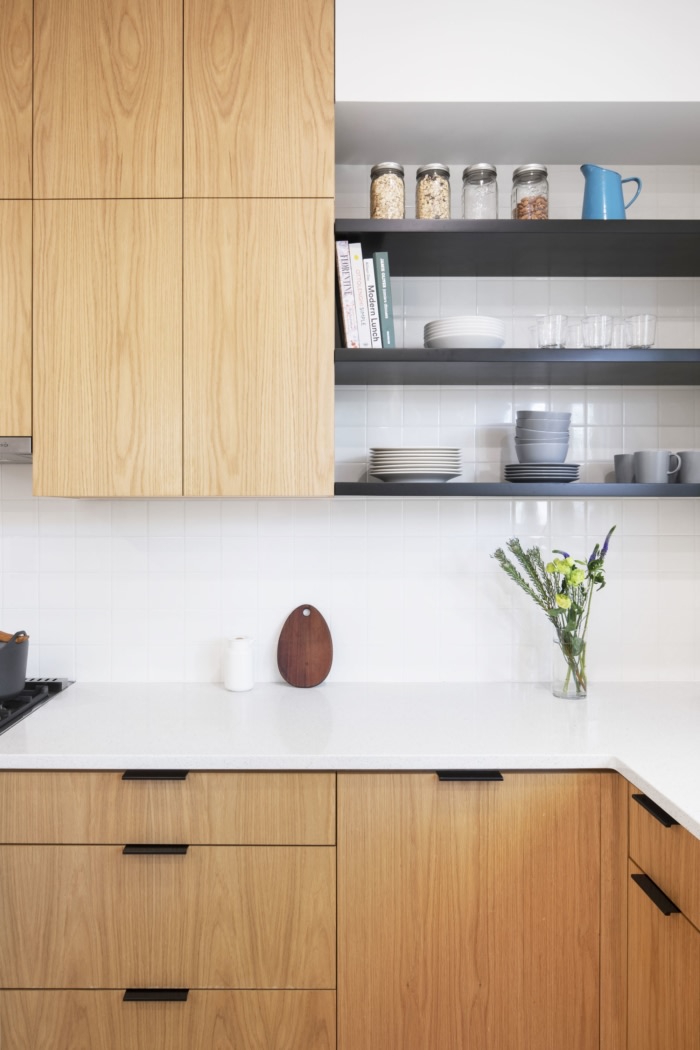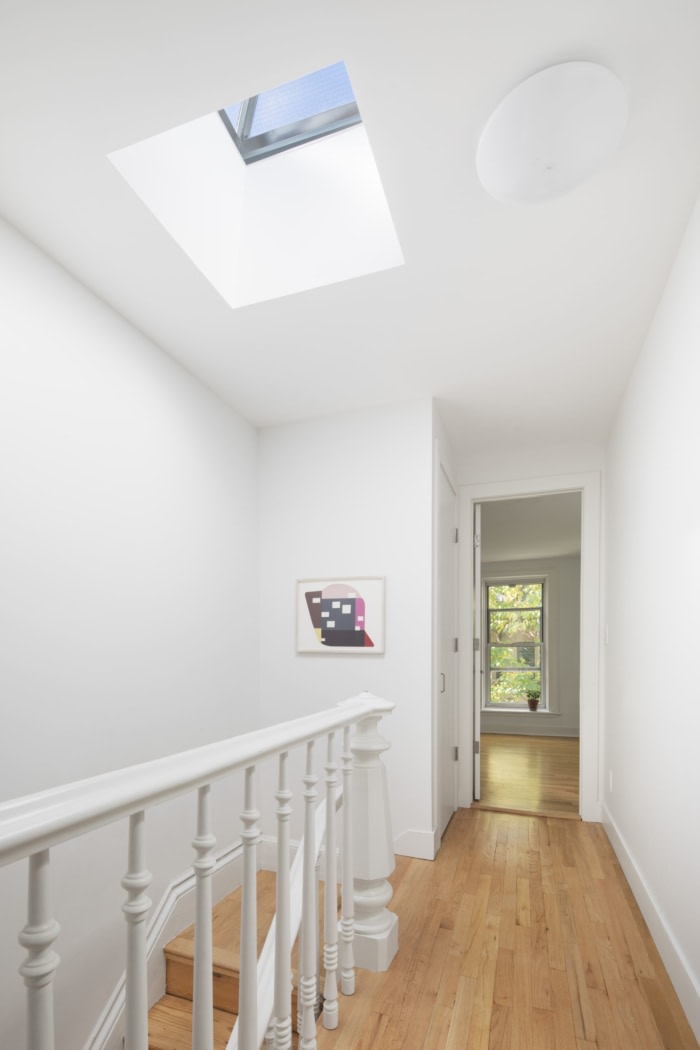Crown Heights Townhouse
Two arts professionals approached Studio Officina Architecture about renovating their existing 100-year-old Brooklyn home into a bright and light-filled dwelling.
They wanted to find a way to update and modernize the existing 3-floor townhouse while retaining the historic details that had originally drawn them to the building.
The couple wanted to create a bright and light-filled home that would also provide room to grow for their young family.
Early on in the design process, decorative & colorful tile was identified as an affordable and accessible way to reflect the clients’ creative spirit and to inject a sense of delight into the home.
Many decades-worth of paint and plaster finishes were stripped from the interior surfaces to reveal and enhance the historic details of the home.
Existing wood floors were sanded, left unstained and coated with a matte finish to draw out their natural quality and color.
The clients requested to relocate the existing ground floor kitchen to the parlor floor level to take advantage of the higher ceilings and natural light on the upper floor.
They were excited to look for a cement floor tile for this room that might be reminiscent of a European kitchen floor, so a re-invented version of a classic checkerboard tile was selected.
An eat-in kitchen was a key wish for the family as cooking and eating together is an important part of their daily lives.
Plain-sawn oak was selected for the cabinet faces to add warmth and natural grain to the kitchen walls. A simple square subway tile was selected for the backsplash to provide a neutral backdrop to the overall design.
On the top floor of the house, abandoned skylights were exposed & re-glazed. A cramped layout of partition walls was demolished, allowing an extra bedroom and bathroom to be incorporated.
Back-to-back bathrooms for the parents and children employed simple Ikea cabinets refaced with new finishes and pulls to add some whimsy and individuality.
Budget-conscious square subway tile was combined with graphic cement tile patterns to provide calm and light-filled rooms with an added element of flair.
Period stair balusters were found at a local salvage yard and incorporated seamlessly into the top floor stair landing, as though they had always been part of the old house.
Careful budgeting with the client and contractor enabled the project to include a new steel deck at the rear yard, adding a direct connection between the new kitchen and the outdoors.
Design: Studio Officina Architecture
Photography: Ines Leong

